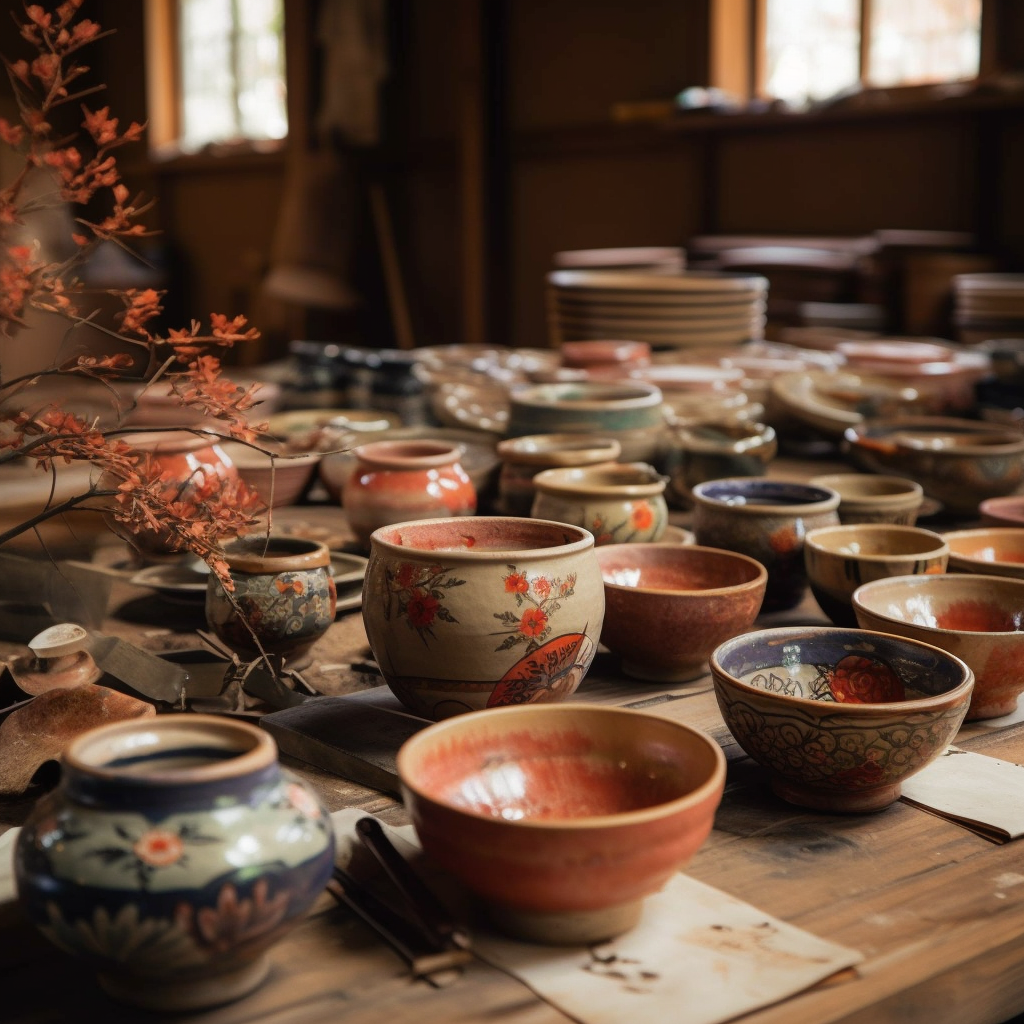Japan is a country with a rich cultural heritage, and its traditional crafts are a perfect reflection of that. From the intricate designs of pottery and ceramics to the delicate art of Washi paper-making, these crafts embody the essence of Japanese aesthetics and craftsmanship. In this blog post, we’ll explore some of Japan’s most famous traditional crafts and learn about their history, techniques, and significance in Japanese culture.
Table of Contents
- Introduction to Japanese Traditional Crafts
- Japanese Pottery and Ceramics
- History of Japanese Pottery
- Types of Japanese Ceramics
- Pottery Villages in Japan
- Washi Paper: A Delicate Art Form
- History of Washi Paper
- Washi Paper-making Process
- Uses of Washi Paper
- Other Notable Traditional Crafts
- Experiencing Traditional Crafts in Japan
- Conclusion
1. Introduction to Japanese Traditional Crafts
Japanese traditional crafts have been passed down through generations, preserving the country’s cultural heritage and showcasing the skills and dedication of its artisans. Each region in Japan has its own unique craft traditions, utilizing local materials and techniques to create beautiful and functional items.
2. Japanese Pottery and Ceramics
Japanese pottery and ceramics are renowned for their beauty and functionality. With a history that dates back thousands of years, this craft has evolved into a diverse array of styles and techniques.
2.1 History of Japanese Pottery
The history of Japanese pottery can be traced back to the Jomon period (14,000-300 BCE), with the earliest known pottery dating back to around 10,000 BCE. Over the centuries, Japanese pottery has been influenced by Chinese and Korean pottery, as well as indigenous techniques, resulting in a wide variety of styles and techniques.
2.2 Types of Japanese Ceramics
There are several types of Japanese ceramics, each with its own unique characteristics. Some of the most famous types include:
- Arita-yaki: Also known as Imari-yaki, this type of pottery comes from the Arita region in Saga Prefecture and is known for its beautiful white porcelain with intricate, colorful designs.
- Kutani-yaki: Hailing from Ishikawa Prefecture, Kutani-yaki is famous for its vivid colors and bold designs, often featuring nature motifs.
- Bizen-yaki: Produced in Okayama Prefecture, Bizen-yaki is an unglazed, reddish-brown pottery known for its natural, earthy aesthetic.
2.3 Pottery Villages in Japan
There are several pottery villages in Japan where visitors can learn about the history and techniques of pottery making, as well as purchase handcrafted pieces. Some of the most well-known villages include:
- Mashiko: Located in Tochigi Prefecture, Mashiko is known for its rustic, earthy pottery and is home to numerous potteries and workshops.
- Hagi: In Yamaguchi Prefecture, Hagi is famous for its elegant tea ceremony ceramics and a history that dates back to the 16th century.
3. Washi Paper: A Delicate Art Form
Washi is a traditional Japanese paper made from the fibers of the mulberry plant, known for its strength, durability, and unique texture. Its use in various forms of art, crafts, and everyday items has made it an important part of Japanese culture.
3.1 History of Washi Paper
Washi paper production dates back to the Nara period (710-794 CE), with the oldest surviving example dating to around 764 CE. The skills and techniques involved in Washi paper-making have been passed down through generations and have been designated as a UNESCO Intangible Cultural Heritage.
3.2 Washi Paper-making Process
The process of making Washi paper is labor-intensive and requires skill and precision. It involves several steps:
- Harvesting and preparing the fibers: The mulberry branches are harvested, stripped of their bark, and then boiled to remove the outer layer and extract the fibers.
- Pulping: The fibers are beaten and mixed with water to create a pulp.
- Forming the sheets: The pulp is poured onto a bamboo screen and spread evenly. The water drains through the screen, leaving behind the fibers which form a sheet of paper.
- Drying: The sheets are carefully removed from the screen and left to dry, either in the sun or indoors, depending on the desired finish.
3.3 Uses of Washi Paper
Washi paper is used in a variety of applications, including:
- Art: Washi is often used in traditional Japanese art forms such as calligraphy, painting, and printmaking.
- Crafts: Washi is popular in origami, bookbinding, and other paper crafts.
- Interior design: Washi can be used for making shoji screens, lampshades, and other home décor items.
- Stationery: Washi is used for creating beautiful and unique greeting cards, envelopes, and other stationery products.
4. Other Notable Traditional Crafts
In addition to pottery and Washi paper, Japan is home to many other traditional crafts, such as:
- Lacquerware: Known as “urushi,” Japanese lacquerware is made by applying layers of lacquer derived from the sap of the lacquer tree to create beautiful and durable items.
- Bamboo crafts: Bamboo is a versatile and sustainable material used in various crafts, including baskets, furniture, and tea ceremony utensils.
- Textiles: Traditional Japanese textiles include kimono fabric, indigo dyeing, and shibori (tie-dye) techniques.
5. Experiencing Traditional Crafts in Japan
Many cities and towns in Japan offer workshops and classes where visitors can try their hand at traditional crafts. These experiences provide a unique opportunity to learn about Japanese culture and history while creating a personal souvenir to take home.
6. Conclusion
Japan’s traditional crafts are a testament to the country’s rich cultural heritage and the skill and dedication of its artisans. Whether you’re admiring a beautiful piece of pottery, marveling at the intricate details of Washi paper, or learning about other traditional crafts, these art forms provide a fascinating glimpse into Japanese culture and history.

コメントを残す